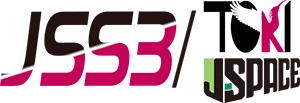Studies on nonlinear vortex dynamics in the later-stage of laminar-turbulent transition in compressible boundary layers
JAXA Supercomputer System Annual Report February 2024-January 2025
Report Number: R24EACA13
Subject Category: JSS Inter-University Research
- Responsible Representative: Kazuo Matsuura, Associate Professor, Ehime University, Graduate School of Science and Engineering
- Contact Information: Kazuo Matsuura(kazuo.matsuura@g.matsuyama-u.ac.jp)
- Members: Kazuo Matsuura
Abstract
In hypersonic transitional flows, there are many complicated factors such as density fluctuation and temperature fluctuation due to the co-existence of the region slower than the speed of sound and the region faster than the speed of sound inside the boundary layer. Detailed investigations into the vortex dynamics occurring inside the boundary layers are expected. In this study, we aim to clarify the nonlinear vortex dynamics especially in the late-stage by conducting direct numerical simulations of laminar-turbulent transition in compressible boundary layers observed in hypersonic flows. Also, we develop a mathematical methodology to directly introduce vortices responsible for the late stage to the boundary layers, and its computational methods.
Reference URL
N/A
Reasons and benefits of using JAXA Supercomputer System
For the investigation of boundary layer transition of hypersonic flows, numerical simulation is a central tool because measurement is difficult due to the existence of acoustical disturbance in a wind tunnel. Because boundary layer transition is susceptible to disturbance, and in addition transition is hard to occur due to strong compressibility, powerful supercomputers that enable high-accuracy large-scale computation are necessary to get results in a short time period.
Achievements of the Year
Simulations of supersonic free shear layer, jet shear layer, and boundary layer were performed, and the structure of disturbances amplified as a result of instabilities was analyzed by applying hierarchical eddy clustering and Liutex eddy visualization methods to the obtained data. Simulations of a ring-tone feedback system in low Mach number flow were also performed, and the feedback mechanism and quantitative prediction of the peak frequency were obtained.
Publications
N/A
Usage of JSS
Computational Information
- Process Parallelization Methods: MPI
- Thread Parallelization Methods: Automatic Parallelization
- Number of Processes: 16 - 128
- Elapsed Time per Case: 168 Hour(s)
JSS3 Resources Used
Fraction of Usage in Total Resources*1(%): 0.02
Details
Please refer to System Configuration of JSS3 for the system configuration and major specifications of JSS3.
| System Name | CPU Resources Used(Core x Hours) | Fraction of Usage*2(%) |
|---|---|---|
| TOKI-SORA | 512406.08 | 0.02 |
| TOKI-ST | 368.72 | 0.00 |
| TOKI-GP | 0.00 | 0.00 |
| TOKI-XM | 0.00 | 0.00 |
| TOKI-LM | 147.74 | 0.01 |
| TOKI-TST | 0.00 | 0.00 |
| TOKI-TGP | 0.00 | 0.00 |
| TOKI-TLM | 0.00 | 0.00 |
| File System Name | Storage Assigned(GiB) | Fraction of Usage*2(%) |
|---|---|---|
| /home | 0.00 | 0.00 |
| /data and /data2 | 0.00 | 0.00 |
| /ssd | 0.00 | 0.00 |
| Archiver Name | Storage Used(TiB) | Fraction of Usage*2(%) |
|---|---|---|
| J-SPACE | 0.00 | 0.00 |
*1: Fraction of Usage in Total Resources: Weighted average of three resource types (Computing, File System, and Archiver).
*2: Fraction of Usage:Percentage of usage relative to each resource used in one year.
ISV Software Licenses Used
| ISV Software Licenses Used(Hours) | Fraction of Usage*2(%) | |
|---|---|---|
| ISV Software Licenses(Total) | 0.00 | 0.00 |
*2: Fraction of Usage:Percentage of usage relative to each resource used in one year.
JAXA Supercomputer System Annual Report February 2024-January 2025


